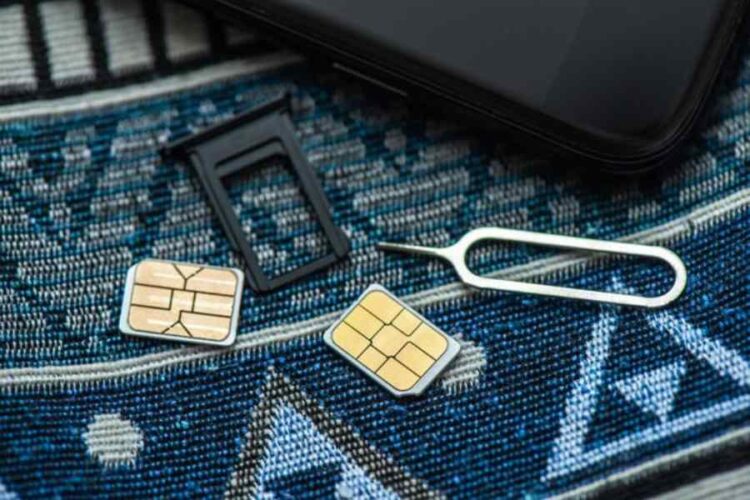SIM cards contain a wealth of information that can be crucial in criminal investigations and trials. Law enforcement frequently analyzes SIM card data to gather evidence in cases involving mobile phones. This data provides critical insights into the actions and communications of suspects.
What is SIM Card Data?
A SIM (subscriber identity module) card is a small, removable chip that allows a cell phone to connect to a cellular network. The card stores unique identifying information that authenticates the phone to the network. Importantly, it also contains call logs, text messages, contacts, browsing history, location data and other information generated through phone use.
When a suspect’s SIM card is examined, investigators can reconstruct their activities before, during and after a crime. Calls, texts, app usage, sites visited, and GPS coordinates may point to incriminating events, conversations, relationships and more. This helps establish motives, timelines, alibis and other legally significant facts.
Authentication of Ownership
A key function of SIM evidence is confirming that a device belonged to a suspect. The unique subscriber ID ties the phone and account to an individual. Instances of a suspect’s phone pinging cell towers at crime scenes strongly indicate presence and involvement.
Police can also request call and text logs from network providers to corroborate ownership. If records from the provider match those stored on the SIM card, it solidifies the link to the suspect.
Communication and Location Data
Examining call and text histories allows police to map out who a suspect communicated with before, during and after an alleged crime. Frequency of contact can reveal close relationships and potential accomplices. Communication content may also hold vital clues about plans, motives and more.
SIM cards also passively log location data whenever the phone connects to cell towers. This produces a virtual map of the user’s movements. Location info can place a suspect at the scene of a crime or other key site. It may also reveal telling travel patterns and meetings.
eSIM Technology
eSIMs are virtual SIM cards stored in a phone’s hardware instead of on a removable chip, and they have become increasingly popular as phones now support both eSIMs and physical SIMs. They provide the same subscriber identification and network authentication functions, making them particularly useful for international travelers. For instance, users visiting Italy can easily download the best eSIM for Italy to enjoy seamless connectivity, switching effortlessly between the eSIM and their physical SIM for calls and data, depending on their location or needs.
However, eSIMs pose new challenges for evidence collection because of the following:
- Remoteness from device – Because eSIMs are integrated into the phone hardware, investigators cannot simply remove and isolate the chip for analysis. This limits physical access.
- Increased reliance on carrier records – Without the physical SIM, authorities must request detailed subscriber usage records from the eSIM service provider. Success depends on carriers promptly honoring legal data requests.
- Lost historical data – eSIMs only store current subscriber profile info, not cumulative usage history like a traditional SIM. This results in less onboard data.
- Encryption hurdles – eSIM data is encrypted both on the phone and over-the-air during provisioning and use. Cracking the encryption may be required.
While certainly not insurmountable, these factors require adaptations to evidence handling procedures. As eSIM adoption accelerates, authorities aim to develop robust new practices and tools tailored to the constraints of embedded SIM technology.
Preserving the Evidence
For SIM data to be valid in court, law enforcement must take care to acquire and handle it properly. SIM cards should be seized as early as possible in an investigation to prevent tampering or destruction. Photographing the card in place in the phone provides additional documentation of its condition and contents at the time of confiscation.
The card must then be isolated in a protected evidence bag or container. Maintaining a verifiable chain of custody for all handling and transfers helps establish its integrity as evidence. Authorities also frequently create an immediate forensic copy or image of the SIM card to preserve its original state for analysis.
Examining the Evidence
Law enforcement utilizes specialized mobile forensic tools to extract and examine data from seized SIM cards. Powerful software can decode and compile the raw technical information into activity reports, call/text logs, media files, web browsing history and more.
Analytical features also help investigators spotlight key events, timeframes and connections. Authorities can even recover some deleted content through these tools. Strict protocols govern this inspection to prevent tampering accusations.
Presenting Findings in Court
For SIM evidence to be admissible in court, analysts must thoroughly document their process. Detailed reports should record exactly how the card was acquired, preserved, handled and examined. This confirms the reliability of the methods used.
In testimony, the analyst explains their credentials, tools, and procedures. On cross-examination, the defense may probe for deviations from protocol that could raise doubts about the integrity of the evidence.
Authorities must also clearly explain how specific SIM data points connect to the alleged crime or offer meaningful insights into the suspect’s actions. Circumstantial information requires careful contextualization to have probative value.
Blockchain and Cryptography
As SIM card technology evolves, so do the investigative practices around it. For example, eSIMs embedded into phones pose new evidence collection challenges. Their lack of physical removability places more emphasis on carrier record requests and mobile forensic tools.
Cryptography also increasingly secures sensitive information both on SIM cards and in transit. Authorities now use supercomputing clusters to crack encrypted data. Blockchain ledger technology on SIM cards may further boost accountability and transparency around access.
International Cooperation
Cross-border crimes often require collaborating with foreign agents to access critical SIM data. However, disparate data privacy laws sometimes prevent sharing of such sensitive personal information. Streamlining these regulations could improve international investigations.
SIM card evidence can deliver breakthroughs by uncovering communication records, location history, web activity and ownership ties. Proper handling and examination of this data produces compelling insights for investigation and trial. Analysts must thoroughly document their processes to establish admissibility. As technology advances, law enforcement aims to adapt practices to extract maximum evidence from SIM cards. With ethical, transparent use of mobile forensic data, authorities can reconstruct events and identify guilt to serve justice.










